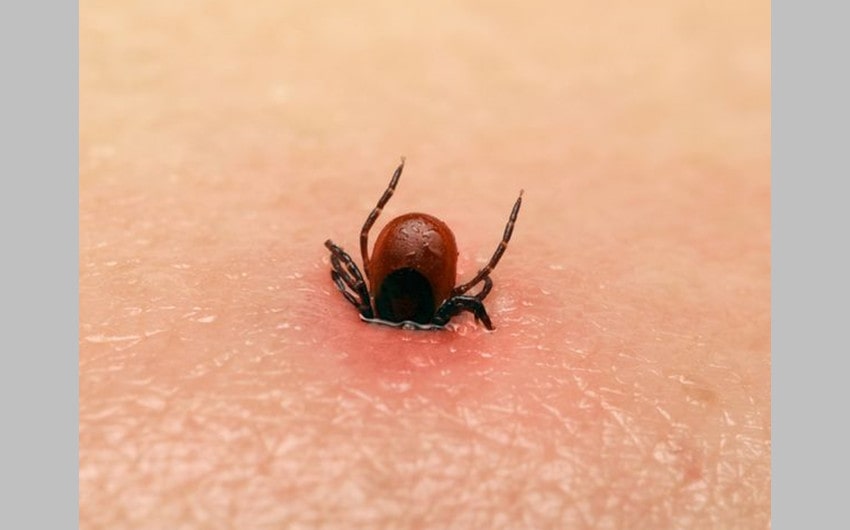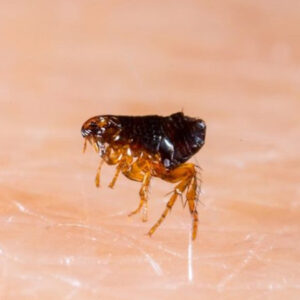
Most people already know that ticks are some of the most dangerous insects in the world. Not only can they cause Lyme disease and Rocky Mountain spotted fever, but they are also very tiny, making it almost impossible to avoid them. And worst of all, they can bite humans and animals alike, allowing them to carry diseases between them.
This article will take a closer look at ticks and answer some common questions, one of them being “at what temperatures do ticks become inactive”? But first, let’s learn more about these small yet dangerous insects.
What Are Ticks?

Image source: Pinterest
Ticks are parasitic insects that feed on the blood of humans and all kinds of animals, including deer, birds, and cats. Their flat, oval bodies are very small, usually about the size of an orange seed, and they swell when they feed on blood. As a result, they are good at passing illnesses without being spotted.
At What Temperature Do Ticks Become Inactive?
Most people believe that ticks die off in the winter. However, that’s not always the case. More specifically, black-legged ticks, which are responsible for spreading Lyme disease, begin their activity just about the time of the first freeze.
That’s because deer, which is their main target, are active during the same period. If there are no deer around, the black-legged ticks will attach to pets or humans once the weather gets warmer.
The black-legged tick’s activity only decreases when the temperatures drop below 35℉ or if the ground is covered in snow. As a matter of fact, the Lone Star (Amblyomma americanum) and American dog (Dermacentor variabilis) are two of the few inactive species of ticks during fall and winter.
The temperature needs to stay under 10℉ for at least two or three days to kill ticks.
Unfortunately, since winters have become warmer, that happens less often. What’s even worse is that ticks attached to pets and other animals can survive extreme temperatures thanks to the host’s body heat.
In other words, you can’t rely on cold weather to get rid of ticks. Letting your guard down only makes it easier for these tiny insects to attach to your body and transmit diseases. And while the risk of Lyme disease is at its lowest between December and March, you can still encounter disease-carrying ticks in the wild. So you should treat your pets year-round for ticks, no matter the outside temperature.
How to Prevent Tick Bites

Image source: Pinterest
Since ticks can cause all sorts of health problems, you need to avoid their bites as much as possible. The good news is that there are many ways you can protect yourself.
1. Avoid Risk Areas
The best way to prevent tick bites is to avoid the areas where these insects hang out. Keep in mind that they can’t fly or jump; thus, their only option is to wait for animals to brush up against them. Therefore, ticks like tall grass, wooded areas, and leaf litter.
If you go hiking, always stay in the center of the trails. When camping, don’t walk through leaf litter or sit on the ground. And, if you want to spend time in your yard, rake any fallen leaves and cut your lawn to get rid of any hiding spots.
2. Protect Yourself
Do you live in a part of the world where tick infestations are very common? Then it can be almost impossible to avoid them, and you’ll have to count on your next line of defense: clothing. To prevent ticks from attaching to you, you can wear:
• Long-sleeve shirts
• Hiking shoes or boots
• Light-colored clothes (which help you spot ticks)
• Long pants that you can tuck into your socks
• Hats
3. Use Tick-Repellent Products
Finally, you can use products with DEET or permethrin to protect yourself. The former repels ticks, while the latter straight up kills them. However, make sure to follow the product’s instructions to use them safely.
For DEET, you should choose a product that contains 20% to 30% of the chemical. Spray it once or twice on your skin and clothes before going outside. Once you get indoors, you need to wash the area of your body that you have covered with DEET.
When it comes to permethrin, pick a product that contains 0.5% of the compound. You can’t use it directly on your skin, but you can treat your clothing, tents, backpacks, and other camping gear. Remember that permethrin will stay on your clothing for up to six washings.








